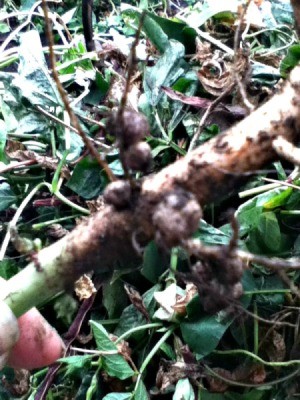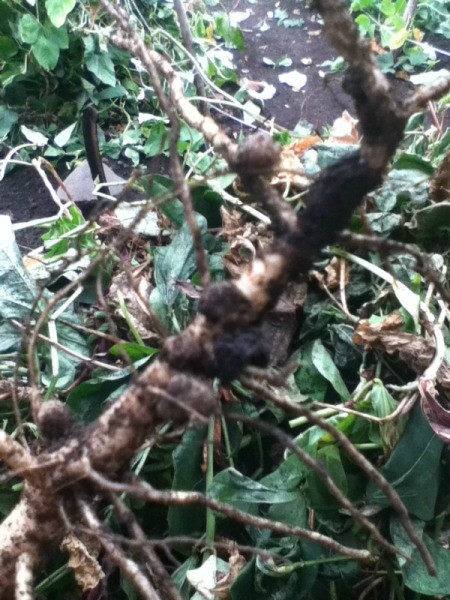
 The first time I ran across the root knot nematode I had no idea what it was. All I knew was that it destroyed my crop of green beans within three weeks. The root knot nematode is a small microscopic worm that lives in the soil. The female can lay up to 500 eggs on the roots of your plants. The eggs, feed on your roots and cause a large knot on the larger roots of the plant. The active worms feed on the smaller roots of the plants. This results in your plants dying rather quickly.
The first time I ran across the root knot nematode I had no idea what it was. All I knew was that it destroyed my crop of green beans within three weeks. The root knot nematode is a small microscopic worm that lives in the soil. The female can lay up to 500 eggs on the roots of your plants. The eggs, feed on your roots and cause a large knot on the larger roots of the plant. The active worms feed on the smaller roots of the plants. This results in your plants dying rather quickly.
Once I had identified the pest that had killed all my green beans I needed to find a way to control them or eliminate them from my garden. However, this wasn't an easy task. I refuse to use any pesticides in my garden. I know that many people here in Tahiti swear by the BIO pesticides they sell in our markets. Unfortunately, these BIO products still contain chemicals that I feel are dangerous to our health.
Digging deeper into this problem I found a working solution that worked for me. I didn't have to use any form of pesticide to get rid of the root knot nematode in my organic garden. I abandoned the large piece of land for 3 months. Here are the steps I took to rid my garden of this pest.
After four months I was able to plant again in this area.

Steps:

Add your voice! Click below to comment. ThriftyFun is powered by your wisdom!
Once, I bought the All America Rose Selection for several past years. I had one beautiful rose garden. The second year, it didn't look so good. By the third year, it was evident all the roses were dying. An Ag agent who examined the roots of one bush informed me the roses were infected with root knot nematodes. They all died.
I am happy for you that you have found a method of eradicating this pest in a manner that does not violate your concerns about the health of your soil.
This is a very difficult worm to get rid of in any garden. It is very hard to get rid of them. For some reason marigold is the miracle plant that seems to do so much. I have marigold plants all around my organic garden. When the plants die, I just turn them under and allow the flowers to reseed the area and grow new plants.
I feel that people use too many commercial products in their gardens. I also feel that BIO is highly overrated and organic is the way to go. I have had a large organic garden for the past 6 years. People come to my garden to buy their fruits and vegetables because I don't use any chemicals at all. We raise rabbits and chicken for fertilizer and my friend brings me horse dropping.
I would suggest in the area that you had your roses planted that you now plant marigold. Let the flower work for a few months and try planting roses again.
How about solarizing your
Garden. In the.summer time we cover the plot.of land with a dark plastic. The.heat from.the.hot summer here In south Florida destroys all the nemos.grubs and what not.in the.soil
I have one pear tree that has the knots on the branches, someone had told me to just cut those limbs and that would take care of it, well needless to say NOPE didn't work. The tree has never produced fruit, it is several years old. I am now going to remove the tree and clean up the area and plant a couple beds of marigolds to see if it works.
This is yet another solution. Unfortunately, this one won't work where I live. In our summer months here on the islands, it is our heavy rain season. We receive too much rain for this one to work. That is why I had to find a different solution.
In Tahiti we have 2 seasons the wet season, which is our hotter summer months, and the dry season, which is our winter months with a lot less rain. In order for this one to work effectively I would need to do it during our summer months. That time of year we have too much rain and the ground would not stay dry to burn the bugs out.
Add your voice! Click below to comment. ThriftyFun is powered by your wisdom!